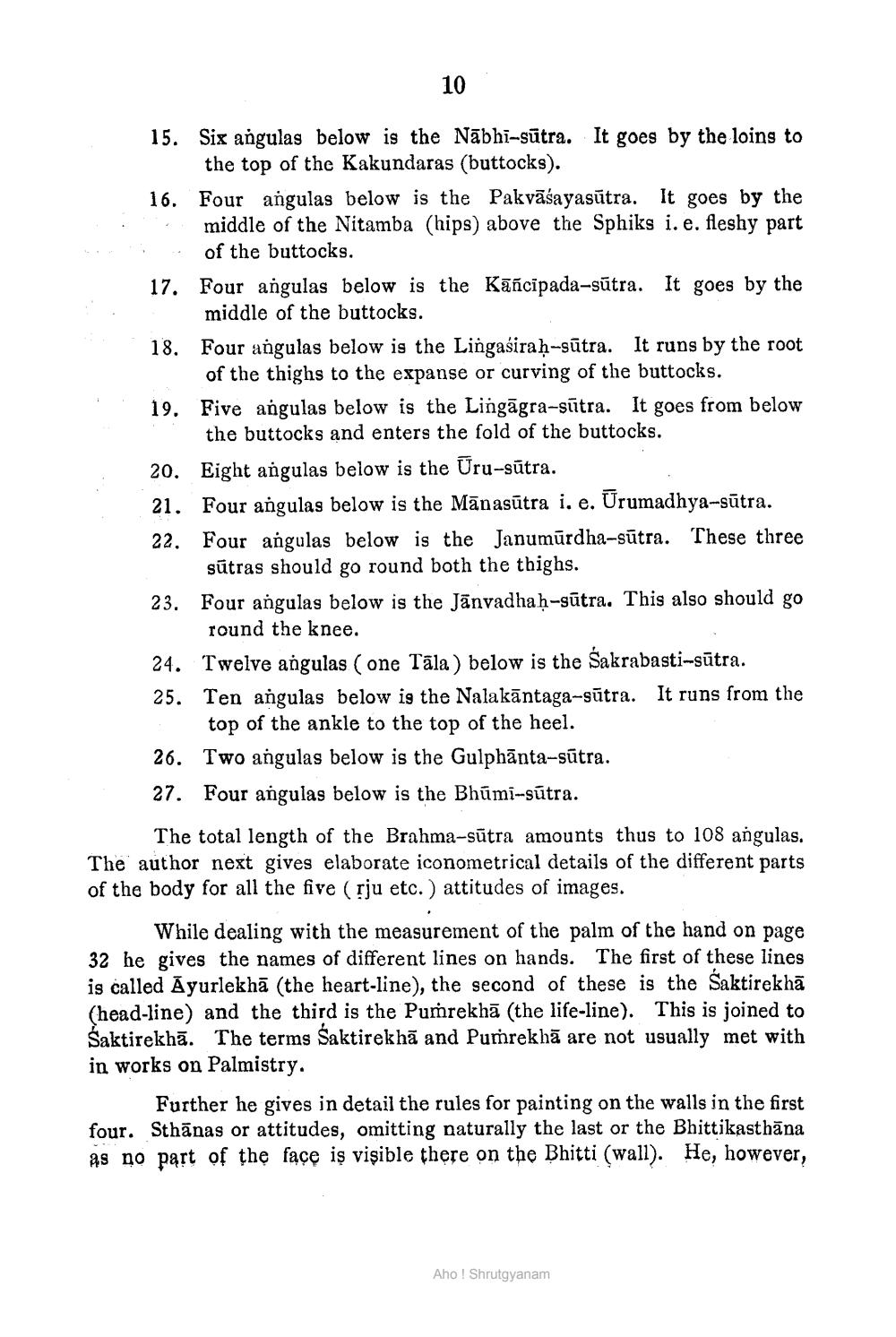________________
10
15. Six angulas below is the Nabhi-sutra. It goes by the loins to the top of the Kakundaras (buttocks).
16. Four angulas below is the Pakvāśayasutra. It goes by the middle of the Nitamba (hips) above the Sphiks i. e. fleshy part of the buttocks.
17. Four angulas below is the Kañcipada-sutra. It goes by the middle of the buttocks.
18. Four angulas below is the Lingasiraḥ-sutra. It runs by the root of the thighs to the expanse or curving of the buttocks. 19. Five angulas below is the Lingagra-sutra. It goes from below the buttocks and enters the fold of the buttocks.
20. Eight angulas below is the Uru-sutra.
21. Four angulas below is the Manasūtra i. e. Urumadhya-sūtra.
22. Four angulas below is the Janumurdha-sutra. These three sutras should go round both the thighs.
23. Four angulas below is the Janvadhaḥ-sutra. This also should go round the knee.
24. Twelve angulas (one Tala) below is the Sakrabasti-sūtra.
25. Ten angulas below is the Nalakāntaga-sutra. It runs from the top of the ankle to the top of the heel.
26. Two angulas below is the Gulphānta-sūtra. 27. Four angulas below is the Bhumi-sutra.
The total length of the Brahma-sutra amounts thus to 108 angulas. The author next gives elaborate iconometrical details of the different parts of the body for all the five (rju etc.) attitudes of images.
While dealing with the measurement of the palm of the hand on page 32 he gives the names of different lines on hands. The first of these lines is called Ayurlekha (the heart-line), the second of these is the Saktirekha (head-line) and the third is the Pumrekha (the life-line). This is joined to Šaktirekha. The terms Saktirekha and Pumrekha are not usually met with in works on Palmistry.
Further he gives in detail the rules for painting on the walls in the first four. Sthanas or attitudes, omitting naturally the last or the Bhittikasthana as no part of the face is visible there on the Bhitti (wall). He, however,
Aho! Shrutgyanam




